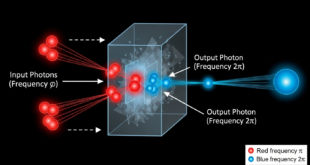In December 2024, Google Quantum AI unveiled Willow, its next-generation superconducting quantum processor, capturing global headlines. Google has officially demonstrated quantum supremacy—a term used to describe the point at which a quantum computer performs a task beyond the practical reach of the most powerful classical supercomputers. Using its next-generation quantum chip, Willow, Google has executed a quantum computation in mere seconds that would take thousands of years for a conventional machine to simulate. This marks a pivotal advancement in quantum information science, signaling that quantum computers are transitioning from theoretical constructs to practical machines with real-world potential.
What Is Quantum Supremacy and Why Does It Matter?
Quantum supremacy is not about replacing classical computers entirely. Rather, it represents a milestone benchmark: the ability of a quantum processor to solve a highly specific problem that would be computationally infeasible for even the fastest classical machines. The problem tackled by Google wasn’t commercially useful—yet—but its difficulty serves as a proof of concept that quantum systems can now outperform classical systems in certain domains.
This moment is analogous to the Wright brothers’ first powered flight. It didn’t carry passengers or cargo, but it changed the world by proving the concept of controlled, powered flight was possible. Likewise, Google’s quantum supremacy experiment has validated decades of theoretical work and demonstrated that quantum computation is now a working reality, not just an aspiration.
Demonstrating the Impossible: A Classic Benchmark Revisited
With a 105‑qubit grid and breakthrough error‑correction capabilities, Willow is not just about more qubits—it’s about making those qubits work reliably. Unlike its predecessors, this chip showed exponential error reduction as qubits scaled from a 3×3 to a 7×7 layout, hitting the prized “below-threshold” regime first theorized nearly 30 years ago. This milestone means logical qubits improve in fidelity as they scale—a turning point that paves the way toward practical quantum computing.
Willow achieved a signature proof-of-concept: completing a standardized random-circuit sampling task in under five minutes—a computation so complex that the world’s fastest supercomputers would need approximately 10²⁵ years to match it. This staggering speed differential amounted to a quantum leap, quite literally. While the long-term utility of the task is debatable, the demonstration is a historic landmark—after decades of trial, Google finally performed an operation truly unreachable by classical machines.
Inside the Chip: How Google’s Willow Processor Made It Happen
Google’s Willow chip is an evolution of its earlier Sycamore architecture, incorporating 72 superconducting qubits arranged in a 2D lattice. These qubits operate at cryogenic temperatures near absolute zero and are manipulated using microwave pulses to perform logic operations. What sets Willow apart is not just its scale, but its breakthroughs in error correction and qubit coherence.
Real-Time Error Correction and the Rise of Logical Qubits
One of Willow’s most remarkable breakthroughs lies in its implementation of real-time quantum error correction. Unlike earlier systems that passively recorded errors for later analysis, Willow’s control architecture actively detects and suppresses errors as computations unfold. This dynamic error management preserves the delicate quantum states against environmental noise, ensuring significantly higher stability throughout operations. The ability to correct errors in real-time marks a vital shift from theoretical feasibility to practical reliability.
The task used to demonstrate supremacy was random circuit sampling, a complex process of generating statistically unique outputs from quantum gates arranged in unpredictable sequences. Classical supercomputers are extremely inefficient at simulating these quantum circuits due to the exponential growth in computation with each added qubit. Willow completed this sampling task in about 200 seconds, while classical estimates suggest it would take 47 years on the world’s fastest supercomputer.
What’s Next? Scaling to Practical Quantum Advantage
While random circuit sampling isn’t a commercially relevant task, the technical lessons learned from this demonstration are invaluable. Google’s team has shown that a quantum chip can maintain coherence and manage errors well enough to perform meaningful, large-scale operations. This is a prerequisite for any future application in cryptography, drug discovery, climate modeling, or AI.
Moreover, this experiment validates Google’s roadmap toward a fault-tolerant quantum computer. In its published quantum computing strategy, the company targets a 1,000 logical qubit machine capable of executing trillions of error-free quantum operations by the end of the decade. This would make quantum computing useful not just for sampling or simulation, but for real-world applications like materials discovery and logistics optimization.
The roadmap now focuses on integrating thousands of physical qubits with sub‑10⁻⁶ error rates, the next target for true fault-tolerant computation. Researchers will pursue logic gate operations on encoded qubits, advancing from memory demonstrations to fully logical quantum circuits. Public skepticism remains—some argue current logical error rates (~0.14%) are still above the ideal threshold—but Willow proves theory and engineering can converge.
The Race Ahead: What Google’s Supremacy Means for the Industry
Google is not alone in the race toward quantum advantage. IBM, Microsoft, Amazon, and a host of global startups are also pushing the boundaries of quantum hardware, software, and algorithms. However, Google’s demonstration gives it a clear technological lead, especially in the areas of error correction and quantum control systems.
Still, the field remains wide open. Google’s supremacy is a first-mover advantage, but scaling quantum systems from 72 to thousands of logical qubits while maintaining fidelity is an immense engineering challenge. It will require innovations not just in qubit fabrication but in quantum networking, cryogenic infrastructure, and quantum-classical integration.
Governments, too, are taking notice. The U.S. National Quantum Initiative, the European Quantum Flagship, and China’s $15 billion quantum program are all ramping up investments. Google’s achievement will likely accelerate these efforts, potentially triggering a new era of quantum geopolitics.
The Quantum Horizon
While consumer-grade quantum PCs remain years away, Willow marks the transition from experimental to transformative. It also accelerates post-quantum security efforts as the reality of quantum encryption comes into focus. Federally funded projects—NASA and others—are already mapping quantum circuits to Willow’s architecture for hybrid classical-quantum applications. With error suppression scaling upward, Google’s blueprint is clear: logical qubits over raw count and stable computations over flashy benchmarks. As Hartmut Neven said, Willow’s success is less about added qubits, more about taming them at scale .
This is a watershed moment that invites us to reimagine what’s possible. As Dr. Hartmut Neven, head of Google Quantum AI, put it:
“We’re standing at the dawn of a new computational era. The quantum future is no longer a question of ‘if’, but ‘when.’”
Takeaway: Google’s Willow chip represents a turning point in quantum computing. By achieving below-threshold error correction and demonstrating real-time stability across logical qubits, it confirms that scaling up can indeed produce more reliable quantum computation. The next steps include enhancing gate operations, extending coherence, and integrating tens of thousands of qubits into error-resilient machines.
 International Defense Security & Technology Your trusted Source for News, Research and Analysis
International Defense Security & Technology Your trusted Source for News, Research and Analysis

